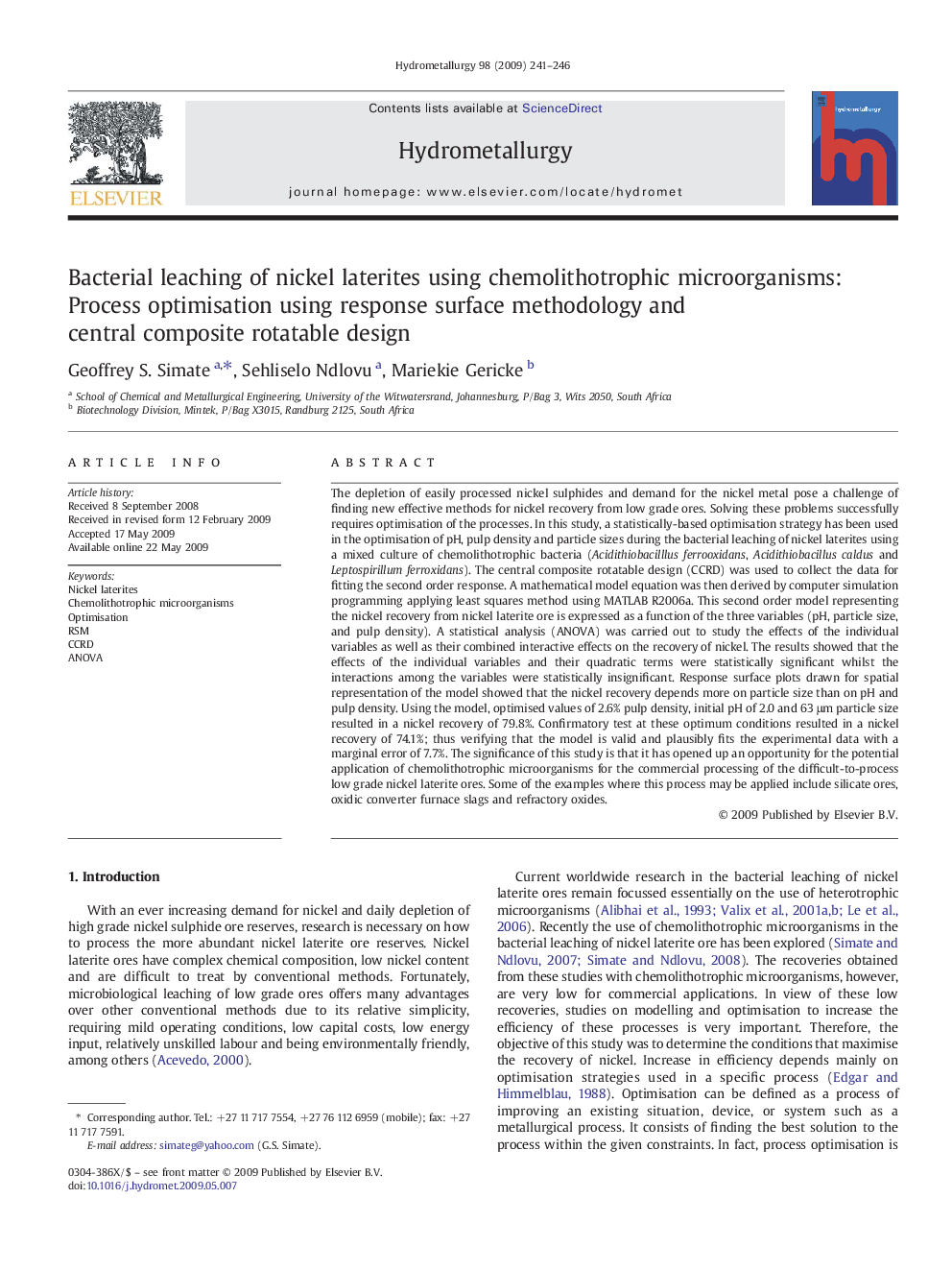| کد مقاله | کد نشریه | سال انتشار | مقاله انگلیسی | نسخه تمام متن |
|---|---|---|---|---|
| 213154 | 462084 | 2009 | 6 صفحه PDF | دانلود رایگان |

The depletion of easily processed nickel sulphides and demand for the nickel metal pose a challenge of finding new effective methods for nickel recovery from low grade ores. Solving these problems successfully requires optimisation of the processes. In this study, a statistically-based optimisation strategy has been used in the optimisation of pH, pulp density and particle sizes during the bacterial leaching of nickel laterites using a mixed culture of chemolithotrophic bacteria (Acidithiobacilllus ferrooxidans, Acidithiobacillus caldus and Leptospirillum ferroxidans). The central composite rotatable design (CCRD) was used to collect the data for fitting the second order response. A mathematical model equation was then derived by computer simulation programming applying least squares method using MATLAB R2006a. This second order model representing the nickel recovery from nickel laterite ore is expressed as a function of the three variables (pH, particle size, and pulp density). A statistical analysis (ANOVA) was carried out to study the effects of the individual variables as well as their combined interactive effects on the recovery of nickel. The results showed that the effects of the individual variables and their quadratic terms were statistically significant whilst the interactions among the variables were statistically insignificant. Response surface plots drawn for spatial representation of the model showed that the nickel recovery depends more on particle size than on pH and pulp density. Using the model, optimised values of 2.6% pulp density, initial pH of 2.0 and 63 μm particle size resulted in a nickel recovery of 79.8%. Confirmatory test at these optimum conditions resulted in a nickel recovery of 74.1%; thus verifying that the model is valid and plausibly fits the experimental data with a marginal error of 7.7%. The significance of this study is that it has opened up an opportunity for the potential application of chemolithotrophic microorganisms for the commercial processing of the difficult-to-process low grade nickel laterite ores. Some of the examples where this process may be applied include silicate ores, oxidic converter furnace slags and refractory oxides.
Journal: Hydrometallurgy - Volume 98, Issues 3–4, September 2009, Pages 241–246